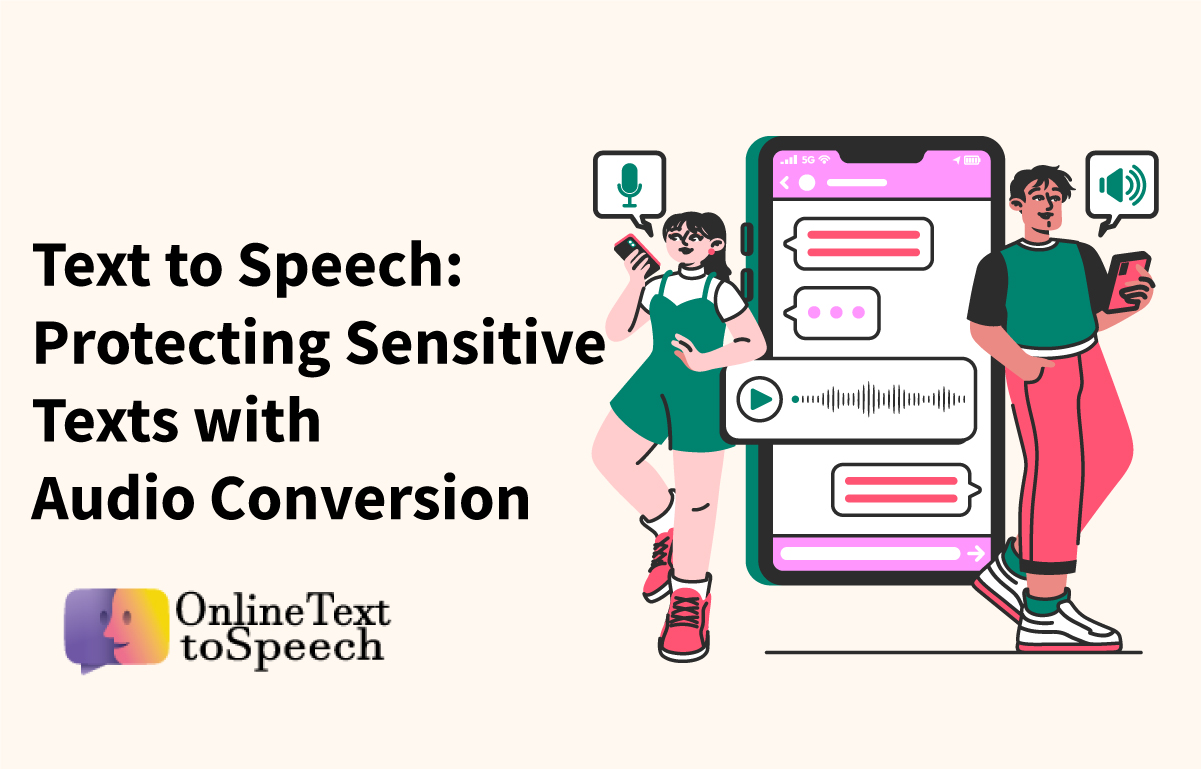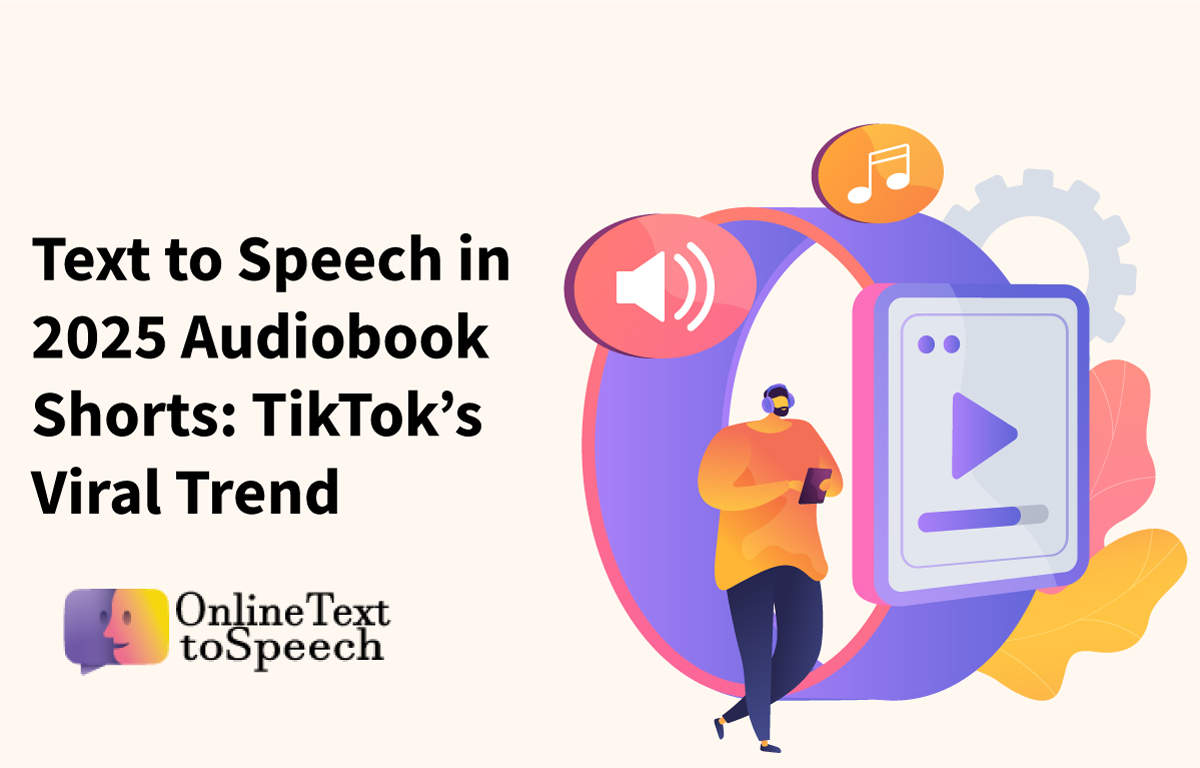
In recent years, text to speech technology has made remarkable strides, transforming the way we interact with digital content. Once a niche feature, it is now embedded in many everyday applications, helping millions across the globe.
rise of AI text to speech has only accelerated this shift, delivering voices that sound more natural and human-like than ever before. From aiding people with disabilities to enabling hands-free communication, the impact of this technology is profound.
One of the most attractive aspects of this innovation is its accessibility. Many platforms offer text to speech free options, allowing users to convert written words into spoken audio with ease. Whether it’s a student wanting to listen to study material or a busy professional needing to multitask.
The convenience of text to audio free tools is undeniable. These free and online services have broadened the reach of this technology, making it an essential part of modern communication. The availability of speech applications means anyone with an internet connection can instantly transform text into spoken words.
This shift is crucial for content creators, educators, and businesses looking to engage audiences differently. Online free online text to speech tools enable quick conversion without the need to download software, making them practical and user-friendly.
Furthermore, the development of advanced text to voice generator systems means users have access to a variety of voice options. From different accents to emotional tones, the ability to choose among various text to speech voices enhances user experience. These generators are no longer simple robotic narrators but customizable tools that fit the user’s specific needs.
The innovation in text to speech generator technology continues to improve, offering richer and clearer voice outputs. This progress opens doors for industries such as entertAInment, education, and customer service to innovate their approaches. The naturalness of AI-driven voices is helping businesses provide more personalized and accessible content to their audience.
The Evolution of Text to Speech Technology
The journey of text to speech technology began decades ago, primarily as a tool for individuals with visual impAIrments. Early systems, while groundbreaking, produced monotonous and robotic voices that lacked emotional depth.
However, the integration of AI and machine learning has revolutionized this space. Today’s AI text to speech systems analyze context and intonation to produce speech that feels more engaging and lifelike.
This evolution has expanded the use of text to speech online beyond accessibility. It now plays a crucial role in content consumption, allowing users to multitask by listening rather than reading. Podcasts, audiobooks, and educational materials are increasingly produced using sophisticated text to speech generators, which enhance productivity and user engagement.
Free text to speech free services have been a significant factor in driving adoption. They provide entry points for users unfamiliar with the technology, allowing exploration without financial commitment. This democratization has helped businesses and individuals alike realize the potential of converting text into audio effortlessly.
Accessibility: A Key Driver of Adoption
One of the most important impacts of text to speech technology lies in accessibility. It empowers individuals with disabilities, especially those with visual impAIrments or reading difficulties such as dyslexia. With the rise of text to audio free tools, users can access written content through auditory means, breaking down barriers to information.
Educational institutions have embraced these technologies to accommodate diverse learning styles. Students can listen to study materials, improving comprehension and retention. The avAIlability of free online text to speech tools means this help is accessible worldwide, reducing educational disparities.
Moreover, for aging populations experiencing vision loss or cognitive decline, text to speech voices offer independence. They enable older adults to interact with technology more comfortably, promoting inclusion in a digital world. This social benefit highlights the importance of continued advancements in text to speech generator quality.
How Businesses Benefit from Text to Speech
Businesses across industries are recognizing the value of text to speech to enhance their communication strategies. Customer service is a prominent example, where automated voice responses powered by AI text to speech provide efficient, 24/7 support. These systems reduce wAIt times and improve user satisfaction by delivering clear and pleasant voice interactions.
Marketing and advertising also benefit from this technology. Brands use text to voice generator tools to create engaging audio content for social media, podcasts, and commercials without hiring voice actors. This reduces costs and accelerates content production cycles.
E-learning platforms rely heavily on text to speech online tools to develop interactive and accessible courses. The ability to offer multiple text to speech voices helps tAIlor content for various demographics, making learning more relatable and effective.
Enhancing Content Creation with Text to Speech Generators
Content creators are discovering new ways to leverage text to speech generator technologies. Podcasters, video producers, and writers use these tools to repurpose written content into audio formats, expanding their audience reach. The integration of AI has improved voice quality to the point where listeners often cannot distinguish between human and synthesized speech.
The use of text to speech free services lowers the barrier to entry, especially for independent creators and small businesses. This democratization fuels creativity, allowing anyone to produce professional-sounding audio content with minimal resources.
Moreover, as demand for audio content grows, having access to a variety of text to speech voices is invaluable. It allows creators to experiment with tone, gender, and style, matching the voice perfectly to the brand or narrative.
The Role of AI in Modern Text to Speech Technology
Artificial intelligence is at the core of the advancements in AI text to speech technology. Unlike early systems, modern AI models understand language nuances, including pronunciation, stress, and intonation patterns. This capability produces speech that sounds natural and expressive, enhancing listener engagement.
AI’s ability to learn from large datasets allows continuous improvement of text to speech voices. Companies constantly update their models to incorporate regional accents and emotional inflections, making synthetic voices more versatile.
The ongoing evolution of text to speech online tools, powered by AI, promises even greater innovation. Features like voice cloning and real-time speech synthesis are becoming more common, expanding possibilities for both consumers and businesses.
Practical Uses of Text to Speech in Everyday Life
The applications of text to speech extend far beyond professional settings. Many people use text to audio free converters for everyday convenience. Whether it’s listening to emails while commuting or enjoying news articles hands-free, this technology fits seamlessly into modern lifestyles.
For travelers, free online text to speech tools can assist with language learning or navigating unfamiliar places by converting text instructions to speech. This practical use enhances comfort and safety when exploring new environments.
Additionally, people with busy schedules benefit from text to voice generator services that allow multitasking. Audio versions of documents, books, or messages mean information consumption doesn’t have to be tied to screens.
Challenges and Limitations of Text to Speech Technology
Despite significant progress, text to speech technology faces some challenges. Achieving perfect naturalness remAIns difficult, especially with complex sentences or idiomatic expressions. While AI text to speech has improved, there is still occasional robotic undertone, which can detract from the listener experience.
Another issue is voice diversity. Although many text to speech voices exist, expanding options to represent more languages and cultures accurately is essential. This inclusion would make the technology more globally relevant.
Privacy concerns also arise with cloud-based text to speech online services. Users must trust providers with their data, prompting demand for secure and offline options.
Future Trends in Text to Speech Technology
Looking ahead, the future of text to speech generator tools is bright. Advances in AI are expected to bring hyper-realistic voices that adapt in real-time to emotional context. Voice cloning technology will allow personalized assistants to mimic a user’s voice.
Integration with other AI technologies, like natural language processing and sentiment analysis, will enable smarter, more interactive applications. This will transform customer service, entertainment, and education even further.
Wider adoption of text to speech free and premium services will continue as users appreciate the accessibility and convenience they offer. Emerging markets stand to benefit greatly as affordable, high-quality options become more widespread.
How to Choose the Right Text to Speech Tool
With so many text to speech online options avAIlable, selecting the best tool depends on user needs. For those seeking cost-effective solutions, free online text to speech platforms are excellent starting points. They provide basic functionality suitable for casual or experimental use.
Businesses or content creators requiring high-quality audio should consider premium text to voice generator services with customizable text to speech voices. Features like language support, voice styles, and API integration can make a significant difference in professional settings.
User-friendliness, compatibility with devices, and privacy policies are also important factors when evaluating different text to speech generator tools.
Conclusion
Text to speech technology has fundamentally changed the way we consume and share information. From empowering individuals with disabilities to revolutionizing content creation and customer engagement, its impact is far-reaching. The continued advancements in AI text to speech promise even more natural and versatile voice outputs, opening new possibilities across industries.
Whether you are a student, professional, business owner, or casual user, leveraging this technology can enhance your communication in meaningful ways. For a reliable and user-friendly option to explore these capabilities, try the best online text to speech converter.
FAQs
Text to speech technology converts written text into spoken audio, allowing users to listen to content instead of reading it.
Yes, many platforms offer free text to speech services, enabling users to convert text to audio without cost.
AI-based systems generate more natural, human-like voices by analyzing context and intonation, unlike older robotic voices.
Several free online text to speech tools let you convert text to speech directly via your web browser.
Yes, modern text to speech generators offer various voices and accents, allowing customization to suit different preferences.





